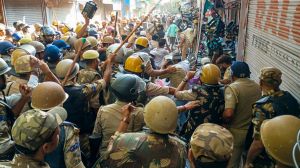Fusion project gets India feeler
India’s quest to join the International Thermonuclear Experimental Reactor (ITER) project is gathering pace with the ITER Preparatory C...

India’s quest to join the International Thermonuclear Experimental Reactor (ITER) project is gathering pace with the ITER Preparatory Committee expected to formally look into the keen interest shown by New Delhi when it meets on September 13. India may also be allowed to participate in some of the technical meetings.
With Washington on New Delhi’s side, hectic diplomatic efforts are underway to get India included in some of technical meetings scheduled between September 7 and 15 at Cadarche in Aix-en-Provence of France, the site for the proposed reactor.
India’s Atomic Energy Commission chairman Anil Kakodkar sent a letter last month to the European Commission, evincing interest in joining the ITER. He gave brief details of India’s independent efforts in fusion research projects and also expressed readiness to make a ‘‘substantial contribution in kind’’ to the project that would be comparable to what other members may provide.
Washington, which yesterday removed unilateral restrictions on supplying sensitive items to Indian entities for non-proliferation reasons, has been working hard on European partners leading up to the ITER meeting. It has shown its intent by also dropping safeguarded reactors from the US commercial entities list.
Last month’s Indo-US joint statement acknowledges India’s interest in ITER and states that the US ‘‘will consult with its partners considering India’s participation’’. The first step in this effort would be to get some Indian presence at Cadarche, probably also at the preparatory meeting which has official representatives from all ITER participant countries.
Currently, the ITER project—building a fusion reactor by pooling scientific and financial resources—involves US, European Union, Russia, South Korea, China, Japan and Switzerland.
|
ITER: It’s a different league
|
|||||
|
• Kakodkar letter to European Commission evinces interest in ITER |
|||||
With August being a quiet month for ITER project officials—most of them proceeding on vacation—the Indian request will be taken up in the next couple of weeks though diplomatic efforts have been continuing. Incidentally, the PM will be in Paris on September 12 on a bilateral visit.
India’s inclusion in this project will be an important signal in accepting it as a responsible nuclear power as well as a recognition of its technical capabilities. For the moment, South Block is tightlipped as it waits for some official intimation on its participation.
This apart, in a significant follow-up to the commitments made during the Prime Minister’s Washington visit, the US has taken India off the list of countries on which it imposes unilateral restrictions for non-proliferation reasons.
Known as the NP-2 list, this includes Iraq, Pakistan, Israel, North Korea and Libya apart from India. These restrictions also automatically apply on Iran and Cuba for which it has a different set of export requirements.
This comes along with the US decision to drop six Indian nuclear and space facilities from the entities list. As first reported by The Indian Express, reactors 1 and 2 of the safeguarded facilities in Rajasthan, Tarapur and now even Koodankulam have been officially dropped from the list.
Three of ISRO’s sub-entities—the ISRO Telemetry, Tracking and Command Network, the ISRO Inertial Systems Unit at Thiruvananthapuram, and the Space Applications Centre at Ahmedabad—have also come off the entities list.
Being removed from the NP-2 list means that a range of high-technology items have been freed from stringent licensing requirements and can also be supplied to these six nuclear and space facilities.
These include equipment like generators and graphite rods needed for reactors that produce electricity. Besides this, depleted uranium with certain specifications and oscilloscopes can be imported more easily after this decision.
This is also significant because many of these equipment like oscilloscopes are used across different industries and have been among the most sought after high-technology items from the US. In all, there are about 11 such items which include software needed in many of these nuclear and space facilities.
The NP-2 is actually the second column of items that form part of the nuclear referral list. The first column or the NP-1 list, as it is referred to, comprises items which the US has stringently licensed because of its commitments to the Nuclear Suppliers Group.






- 01
- 02
- 03
- 04
- 05

























